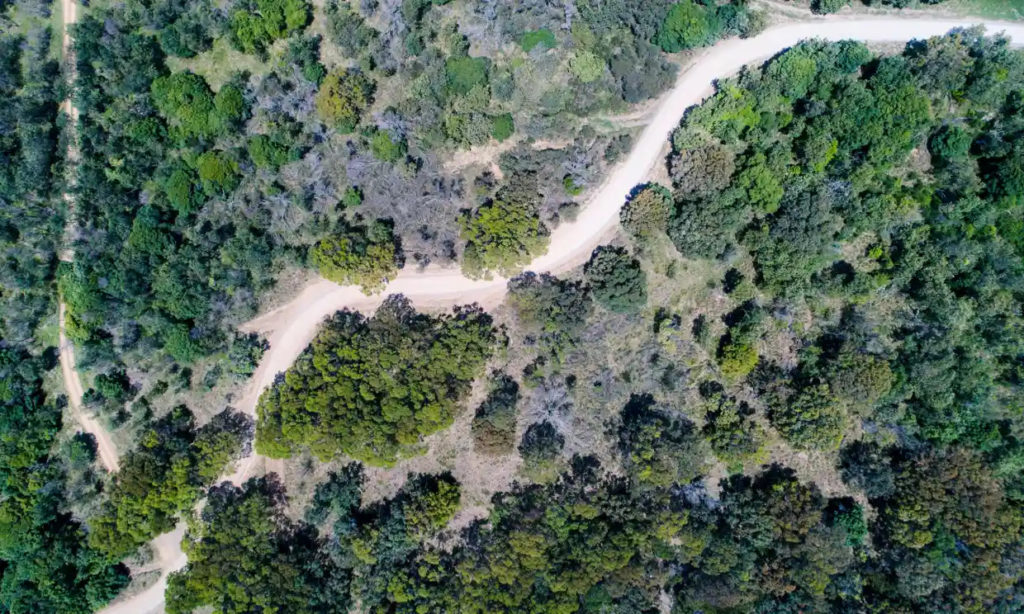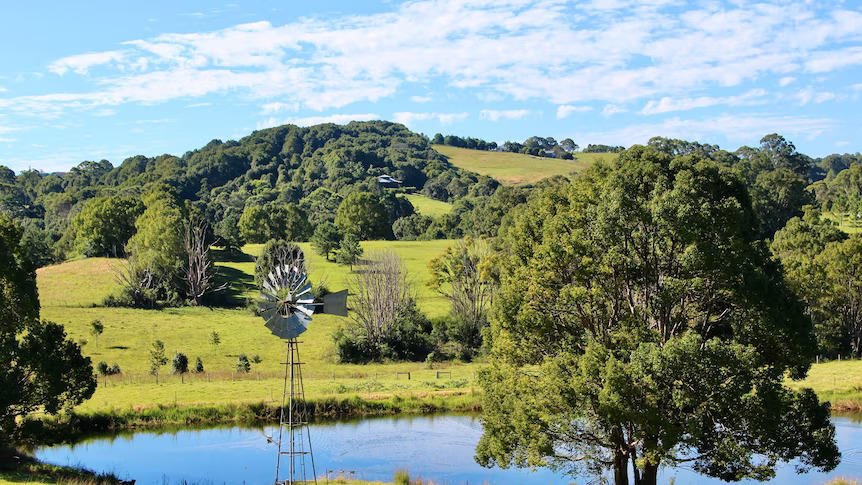Original publication by Adam Morton for theguardian.com on 7 November 2022

Photograph: Tetra Images/Alamy
Projects meant to regenerate Australia’s outback forests to store carbon dioxide have been awarded millions of carbon credits – worth hundreds of millions of dollars – despite total tree and shrub cover in those areas having declined, a new analysis has found.
It is the latest claim that raises doubts about the integrity of Australia’s carbon credit system, which the federal government and polluting businesses rely on to meet targets to reduce greenhouse gas emissions.
The analysis by six academics, including the former carbon credit scheme integrity chair Prof Andrew Macintosh, has been presented to a review of the system commissioned by the climate change minister, Chris Bowen.
Carbon credits are issued for projects that use government-approved methods to store or avoid greenhouse gas emissions. One carbon credit is meant to represent one tonne of carbon dioxide. Credits can then be sold to the government or polluting businesses, which use them to offset their onsite emissions.
Macintosh, an environmental law and policy professor at the Australian National University and former head of the government’s Emissions Reduction Assurance Committee, said the analysis found compelling evidence of widespread problems with forest regeneration projects.
He said some projects that used the human-induced regeneration (HIR) method had been awarded carbon credits for managed forest regeneration when it had not occurred, and others for regeneration that would have occurred anyway because it was mostly just due to rainfall.
The academics from ANU and the University of NSW said in nearly all cases they found tree growth followed the same rainfall-driven pattern in both managed carbon credit project areas and in neighbouring areas that had not been managed to capture carbon dioxide.
The team examined 169 projects that together received about 24m credits between 2015 and 2021. They said 92 projects in NSW received 13.6m carbon credits, but the combined area of forest and sparse woody vegetation cover in the affected areas was more than 10,000 hectares less than when the projects were first registered. In Queensland, they said, 73 projects were found to have received 9.9m carbon credits while forest cover went backwards by more than 50,000 hectares.
Macintosh, who has previously described the carbon credit system as a “sham” and a fraud on taxpayers and the environment, said the results were alarming but should not be surprising. He said decades of research in mostly dry landscapes indicated that changing livestock and feral animal grazing practices – the method used under human-induced regeneration – had relatively little impact on tree and shrub cover.
He said the analysis should prompt “some soul searching within the commonwealth government”, and that responsibility mostly sat with the Clean Energy Regulator, which administers the scheme.
“The way in which it has occurred and been allowed to continue raise material questions about the Australian government’s capacity to operate schemes of this nature,” he said.
Claims disputed
The claims are a focus of the government review of the carbon credit scheme led by Prof Ian Chubb, a former national chief scientist. They are disputed by some companies that manage nature-based projects to store carbon in vegetation.
Climate Friendly, which was set up nearly 20 years ago by former CSIRO scientists and has a target of delivering 100m tonnes of emissions abatement by 2025, said it had “a large volume of data” that showed older projects had increased forest cover once grazing practices were changed. It said it expected satellite data would show forest cover had started to increase on more recent project sites this year.
Its argument is that high rainfall is necessary for significant regrowth, but it would not have happened without changes in grazing practices. It said projects that reduced the amount of grazing in a given area had a similar impact on forest regrowth as projects that stopped land clearing.
Climate Friendly said this was backed by 81 field measurements by the CSIRO that found there was more carbon stored in regenerating trees across three project sites than it was being credited for. It argued the model used to estimate carbon credit claims, known as FullCAM, was inherently conservative.
Climate Friendly’s co-chief executive, Skye Glenday, said the company believed there should be more freedom to make carbon crediting data public.
“If you’re purchasing a tonne [of carbon abatement] you can be certain you are getting a tonne,” she said.
GreenCollar, which describes itself as Australia’s largest environmental markets investor, has said it was confident its projects regrowing native forests were generating real emissions reductions, but there were broader issues with measurement and governance.
As reported by Guardian Australia, GreenCollar released a joint statement with Macintosh and his colleagues last month describing “fundamental problems” with the governance of the scheme. It said it disagreed with Macintosh on several points, but agreed the scheme needed to be overhauled to improve measurement of how much carbon dioxide was being drawn from the atmosphere, and to improve the governance of the system overseen by the Clean Energy Regulator.
In a statement in response to Macintosh’s latest paper, GreenCollar chief executive, James Schultz, said the company was eager to work with people and organisations that were “equally keen to achieve the highest integrity carbon abatement system and market Australia can achieve”. He said carbon crediting methodologies were “not static”.
“They evolve as advances in scientific and technical knowledge advance,” he said. “In all the projects we manage, GreenCollar is dedicated to real, measurable and verifiable outcomes that genuinely deliver results for our environment.”
GreenCollar and Macintosh both said the regulator had too many roles and was potentially conflicted. They called for some of its powers, including preparing methods under which carbon credits are created, to be given to other agencies.
The Clean Energy Regulator has rejected these criticisms. In a statement in June, it said Macintosh and his colleagues had failed to present robust evidence of a lack of integrity in the system and based their analysis on an incomplete dataset. In response to the latest paper, a spokesperson for the regulator said it welcomed the government’s review and noted it was due to report at the end of the year.
‘Judgment call’
Chubb has acknowledged there is a widespread view that the governance of the scheme needs to change.
Speaking at the Australasian Emissions Reduction Summit last month, he said there was “a view, through no fault of its own, that the regulator has been asked to do multiple tasks which some people see as a potential for conflict and that we should seek to simplify”. He said there had been a widespread call for greater transparency to allow validation of data.

Photograph: Andrew Sheargold/AAP
The review panel has not given a view on submissions from Macintosh and his colleagues – Dr Pablo Larraondo, Prof Don Butler, Dr Dean Ansell, Marie Waschka and Dr Megan Evans – about the need for changes to the methods used to generate credits. Some of the proposed changes have industry support. Several companies that run projects to cut emissions from landfill sites have backed analysis by Macintosh that found the method covering their industry was generating meaningless credits and resulted in emissions increasing.
Chubb told the conference: “Somewhere along the line, this group [the panel] will have to make a judgment call about where the weight of evidence lies, and if and how we can improve it so that the trust issue improves and the value of the whole scheme increases.”
Chubb, Macintosh and the companies working in the field all support the use of carbon offsets to help reduce emissions, but have said they should not be used as an excuse for polluters to delay their own cuts. Chubb recently said big emitters should not be able to use offsets to avoid doing something about reducing their own emissions.
Others have gone further. A recent report by the Australia Institute, a progressive thinktank, cited expert opinion that offsetting emissions should be a last resort, used only in hard-to-abate sectors, and should not be available to all polluters.
Bill Hare, a climate scientist and the chief executive of Climate Analytics, said many environmental policy experts supported a bigger change in how and when credits could be used. It was necessary in part because the evidence showed sequestering carbon in trees was not the same as cutting fossil fuel emissions, he said.
Writing in the Conversation, he said every tonne of carbon dioxide released by burning fossil fuels had “a very long tail” in the atmosphere. About 40% of it would survive after a century and 20% after 10,000 years.
By contrast, the Australian scheme considers carbon credits a permanent reduction in emissions if they last between 25 and 100 years, depending on the project. Hare said it meant offsets needed to be “very good to be worthwhile”.
“If they’re not real, additional and permanent – or if they’re used to continue fossil fuel emissions – then they will make climate change worse rather than better,” he said.




